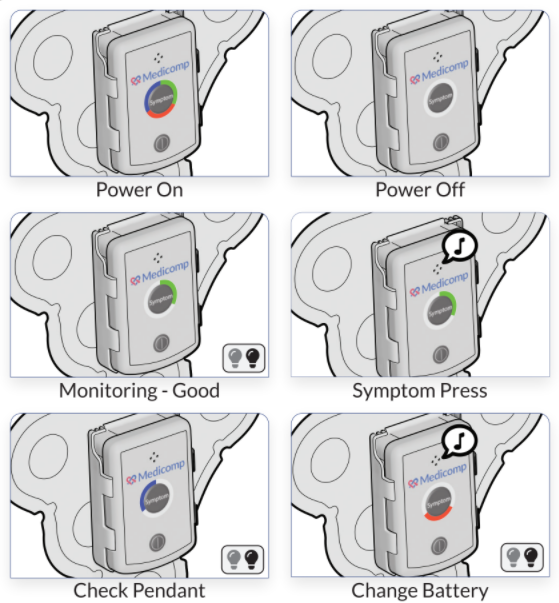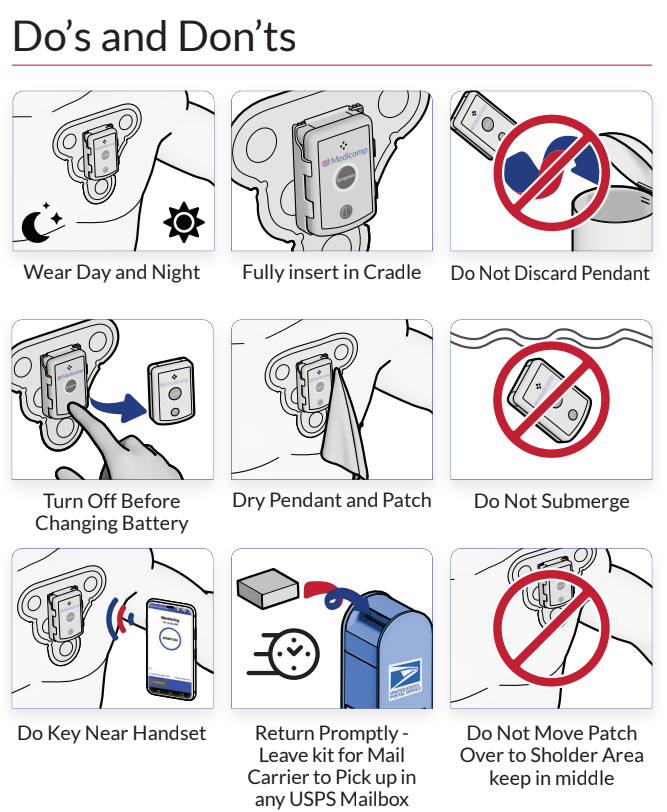Recently, you visited your cardiologist who recommended you wear a heart event monitor. She hands you a wearable cardiac monitor and shows you how to wear it. Your surprise at the constant supervision your heart requires does not give you time to formulate questions before you leave, though. Now, you are home with your wearable cardiac monitor, and the questions you should have asked are playing through your mind, such as:
- Should I continue to exercise as I did in the past?
- Is this like wearing a brace where you should slow down for a while?
- Do I wear this monitor all the time or only while I am awake?
- Can I wear it swimming?
- What is the monitor telling my doctor?
Below are some answers to these important questions brought to you by the cardiac monitor experts at ReactDx.
- What They Do: Wearable cardiac monitors are designed to record the electrical activity in your heart then wirelessly transmit that information to your healthcare professional for analysis. The electrodes of your monitor are specifically placed to record the best signals possible. Most monitors have leads that adhere to the chest wall and connect via wires to a device you can clip to your belt or carry in your pocket. Excess oil, perspiration, and hair can loosen the adhesion which may disrupt the signal. Ensure a clean, flat surface for the most accurate reading possible.
- Leads & Activity: Check your leads regularly if you are exercising. Frequent movement can pull away the patches, which is recorded on the ECG strip in the form of “noise.” Any cardiac event that occurs with detached leads is extremely difficult to read. Choose an exercise plan that does not cause excess perspiration. This may differ from your typical routine; call your doctor’s office to discuss how you should exercise with your doctor. If you feel symptomatic, stop what you are doing. The recording should be about the arrhythmia, not interfering movement.
- Outside Interference: Many of our everyday gadgets send a constant stream of information which may interfere with your monitor. MP3 players, iPods, and cellular telephones need to be at least six inches from your cardiac monitor. Other electronics contain magnets – metal detectors, microwaves, electric blankets, razors, and battery-operated toothbrushes. Avoid using these objects for the duration of your monitoring. If you are employed or live near a high-voltage area, tell your doctor.
- Keep a Diary: For the best results, keep a diary of any symptoms you may have and the activities you are engaged in. This can be a paper format or simply taking notes on your cellular phone’s calendar. Your physician would like to know the symptoms you feel, the time they occur, and what you were doing when they occurred. Symptoms you may have may include dizziness, fainting, or palpitations (when your heart feels like it is skipping a beat, fluttering, or beating too quickly) in your chest or neck area. The information you provide will be matched with the information on your cardiac monitor to give a more accurate reading. They can also let your doctor see what activities trigger heart disturbances. Other items to include in the diary are the times you take any medications – prescribed or over-the-counter – and anytime you feel overly stressed.
Remember, if you are feeling palpitations, stop what you are doing. If you believe you are having a heart attack, call 911 immediately or have someone drive you to the emergency room. When the testing period is over, return the monitor and your diary to your doctor. After comparing the diary and wearable cardiac monitor readings, your doctor will proceed to the next step in your health care – prescription medication, advice on cardiac health, or possibly surgery. If you have any questions concerning the cardiac monitors used for your testing, contact ReactDx at 800-23-HEART (800-234-3278).



